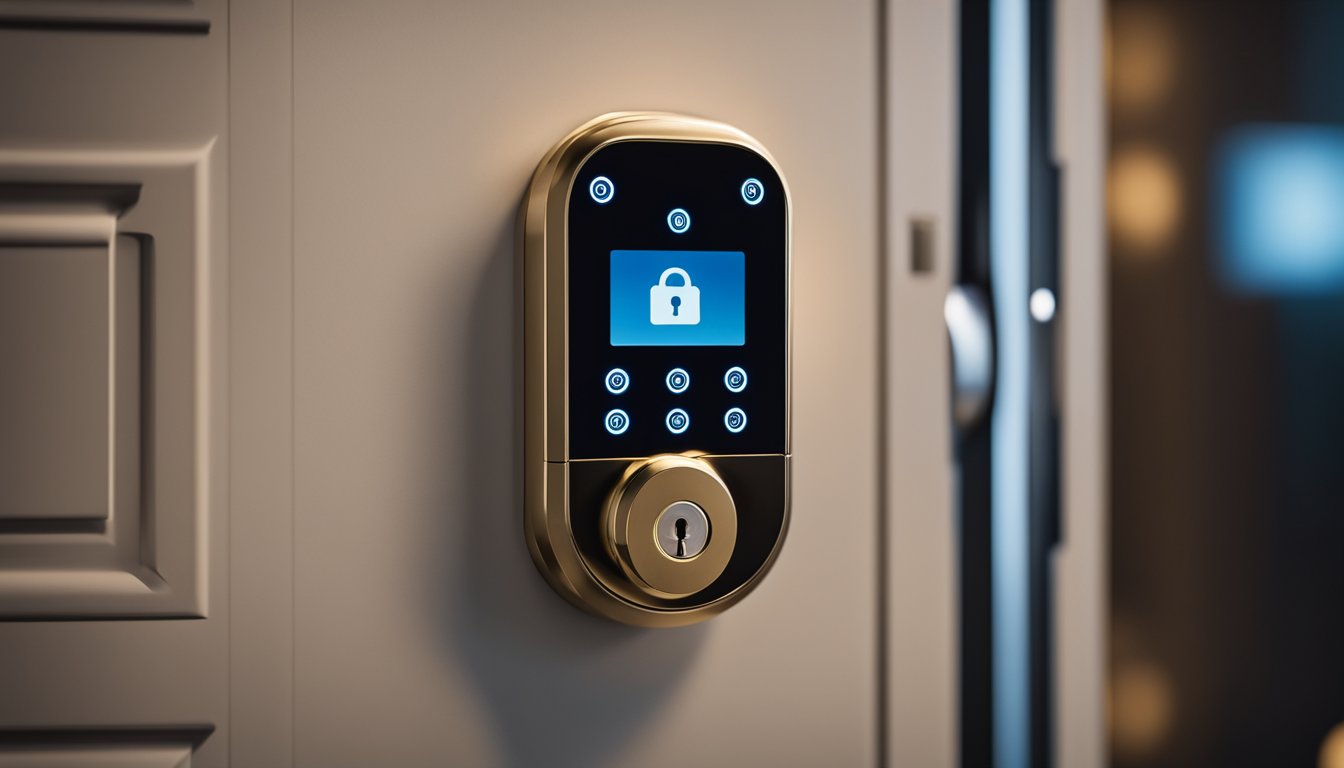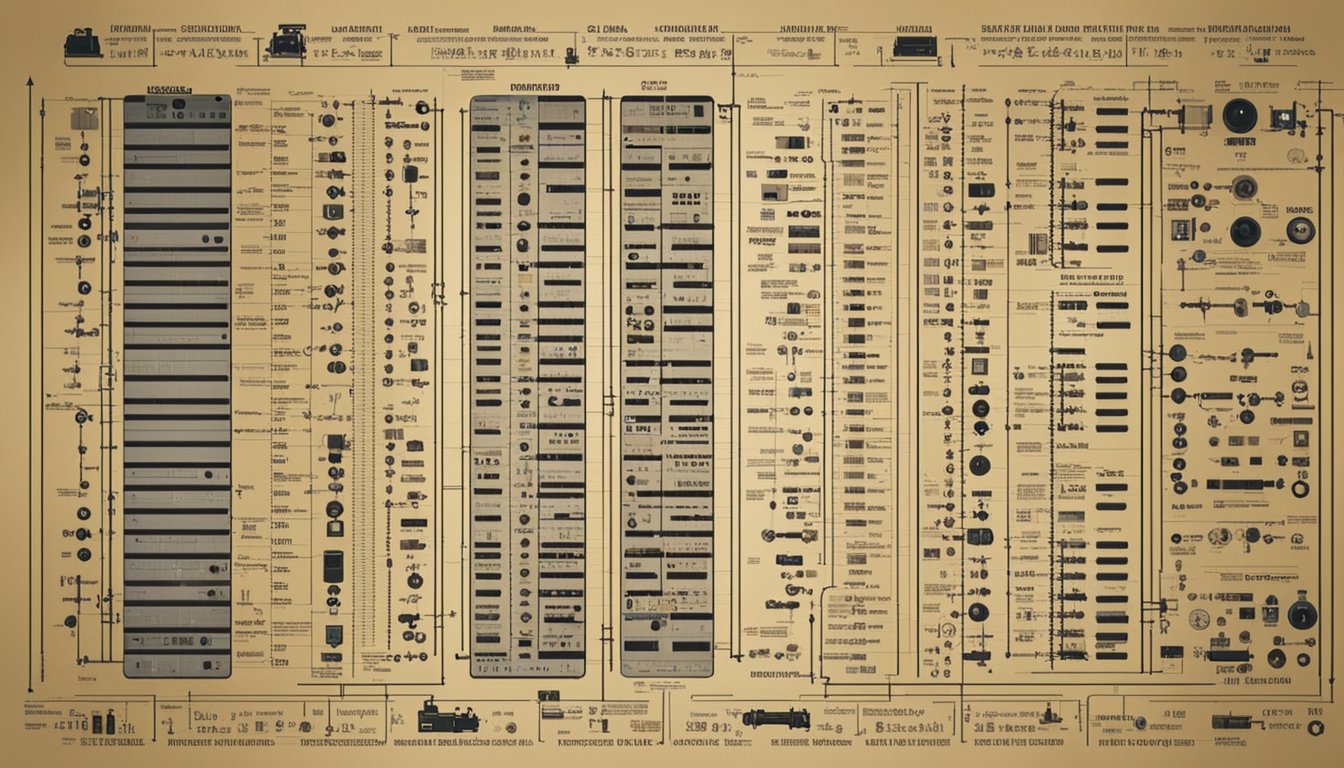Late updated: 07 Mar 2025 15:03
Written by: Elena Prescott
Understanding the History of Locking Mechanisms: A Timeless Evolution
From the ancient civilisations of Egypt and Mesopotamia to the digital locks of today, the evolution of locking mechanisms is a fascinating tale of innovation and security. Ancient societies recognised the necessity to safeguard their possessions, leading to the creation of the earliest known locks over 6,000 years ago. At its core, the history of locks reveals our enduring quest for security and protection, reflecting the technological and cultural advancements of each era.

The ingenuity of early locksmiths is evident in the diversity of locking mechanisms that have emerged throughout history. The Romans introduced wards in locks to obstruct the incorrect key's entry, and by 1778, the first double-acting tumbler locks were developed in England. These innovations set the stage for the complex locking systems we utilise today.
In recent years, the field has welcomed electronic and smart locks, marking a significant shift from traditional mechanical systems to digital security solutions. These advances not only enhance security but also provide us with unprecedented convenience and control over our safety.
Key Takeaways
- Locks have evolved from simple wooden mechanisms to advanced digital systems.
- Ancient locksmiths played a crucial role in developing early security features.
- Modern lock technology offers enhanced security and convenience.
Evolution of Locking Mechanisms
The transformation of locking mechanisms demonstrates human ingenuity, from the earliest use of basic materials and designs to more sophisticated systems, enhancing security over the centuries. These innovations were crucial in shaping modern security measures.
Ancient Inventions and Early Metals
In ancient times, basic locks made of wood and rope were among the first security measures. The earliest known use of metals in locks can be traced back to ancient Egypt, where craftsmen employed simple pin tumbler mechanisms. These rudimentary designs were eventually refined by the Greeks and Romans, leading to more durable locks constructed from iron.
Metalwork played a significant role in restructuring security, bolstering the durability and complexity of locks. Keys were often large and ornate, crafted from iron or bronze. Their role was critical, with locksmiths evolving their skills to enhance security through intricate designs.
Bramah and Chubb: Pioneers of Security
The late 18th and 19th centuries marked a significant era in the evolution of locks with innovators like Joseph Bramah and Jeremiah Chubb. Bramah's introduction of the hydraulic press allowed for precision in manufacturing, paving the way for his revolutionary safety lock in 1784. His design was highly resistant to tampering, setting new standards in security.
Jeremiah Chubb, another pioneer, invented the Chubb detector lock after the rise in lock-picking incidents. His lock utilised a unique mechanism that thwarted attempts to manipulate it without raising an alarm. These innovations not only improved security but also advanced locksmithing as a trade, influencing future designs.
From Warded Locks to Tumblers
The transition from warded locks to tumbler mechanisms marked a milestone in locking technology. Warded locks, characterised by their reliance on obstructing wards to prevent improper keys from turning, were widely used in medieval times. Despite their popularity, these locks had vulnerabilities, prompting innovation.
The introduction of tumblers offered a more secure alternative. The pin tumbler lock, refined by Linus Yale, Jr., became particularly influential, utilising a small, flat key with a serrated edge. This design, inspired by ancient Egyptian systems, provided enhanced security by requiring the correct alignment of pins. The shift to tumbler mechanisms signified a leap forward in aligning locks and keys with growing security demands.
Modern Advances in Lock Technology

In recent years, advancements in lock technology have significantly enhanced security measures for protecting valuables. From innovative mechanical systems to digital transformations, lock designs have evolved to meet the needs of contemporary society. Let's look closely at some of the key developments in modern lock technology.
The Rise of Combination Systems
Combination locks have rapidly gained popularity due to their ability to secure items without the need for a key. Combination padlocks are especially favoured for their adaptability in various contexts, from school lockers to gym facilities. By turning a dial or entering a sequence of numbers, users can unlock mechanisms that are particularly resistant to traditional lock-picking techniques.
The versatility of combination systems makes them well-suited for securing a wide range of valuables. Digital combination locks, which can be programmed to use different codes, offer further flexibility and security. As a result, users can easily change combinations, adding an extra layer of security to their possessions.
Innovations in Cylinder Lock Design
Cylinder locks, a staple in security, have undergone significant technological advancements in recent years. Building upon the innovation of the falling-pin mechanism, the design of modern cylinder locks has greatly improved. Enhanced designs increase resistance to picking and bumping, which are common forms of lock tampering.
Manufacturers now use more robust materials and intricate mechanisms to ensure these locks remain difficult to compromise. Innovative features like anti-snap and anti-drill make cylinder locks even more secure, making them a preferred choice for securing residential and commercial properties. With these improvements, cylinder locks continue to be a reliable security solution globally, including in bustling metropolises like New York City.
Locksmithing in Contemporary Society
In today's world, the role of locksmiths extends far beyond crafting and repairing antique locks. Modern locksmithing involves an understanding of advanced technologies, addressing the needs of smart locks and sophisticated security systems. As security needs evolve, so do the skills and tools of contemporary locksmiths.
Locksmiths offer invaluable service to society, balancing traditional craftsmanship with digital savviness. They are essential in navigating the complexities of modern security, particularly in urban areas. By staying updated on current technologies and trends, locksmiths ensure that both individuals and businesses maintain secure environments. Consequently, their expertise continues to be an indispensable part of security in our society.
Frequently Asked Questions

Throughout history, diverse locking mechanisms have evolved from simple wooden structures to complex modern systems, showcasing different technologies and cultures. We've compiled crucial questions to explore various types, historical influences, and foundational principles underlying these security devices.
What are the various types of locks developed throughout history?
Throughout the ages, locking mechanisms have included wooden pin locks, warded locks, and lever tumbler locks. Ancient designs were often rudimentary, using simple materials like wood or iron. With time, more intricate designs emerged, such as combination locks. Each type represented the technological capabilities and security needs of its era.
How do simple locking mechanisms differ from modern locks?
Simple locks primarily relied on basic physical principles to prevent unauthorised access, often susceptible to brute force or simple tools. In contrast, modern locks incorporate advanced materials and electronic components, offering enhanced security features like biometric access. These advancements significantly reduce vulnerability to tampering.
Who is credited with the invention of the lock and key system?
The earliest known lock was discovered in Egypt and dates back around 4,000 years. The design included wooden components. The Romans later advanced this concept by introducing metal locks and keys, significantly influencing the development of the lock and key system.
How has the functionality of locking mechanisms evolved over time?
Originally, locks served to bar access using simple mechanics. Over centuries, aesthetic and structural refinements added layers of security. Modern locks now integrate digital technologies, such as smart locks, that grant access through electronic credentials, bridging usability with sophistication.
In what ways have historical locks influenced today's security measures?
Historical locks laid the groundwork for contemporary security systems by providing fundamental mechanical principles. Their evolution pushed forward innovations that underlie modern locksmithing, influencing current designs like pin tumbler locks and smart security devices. These legacy concepts continue to be foundational in modern security engineering.
What principles underlie the operation of mechanical locks?
Mechanical locks primarily operate on principles like aligning components to allow movement, such as pins in a tumbler lock. Precision in these alignments determines whether access will be granted. These principles have persisted and evolved, underpinning both traditional mechanical locks and modern mechanical components in electronic systems.
